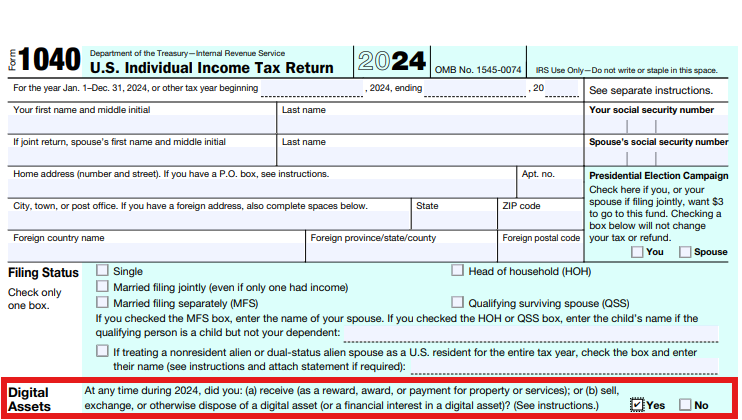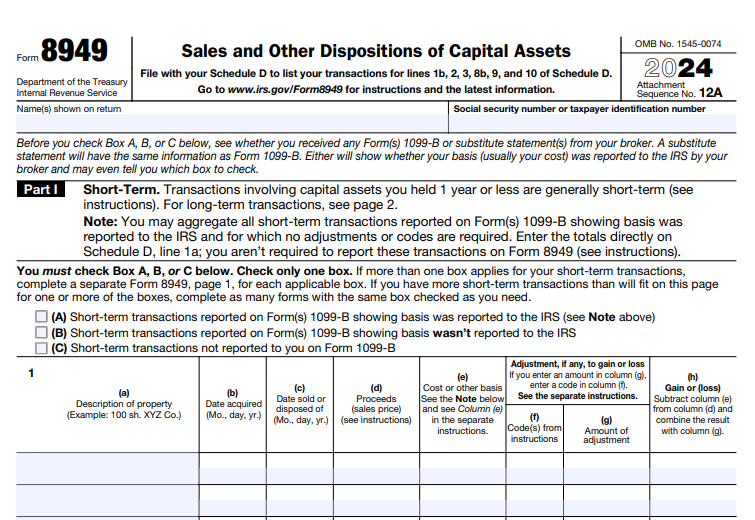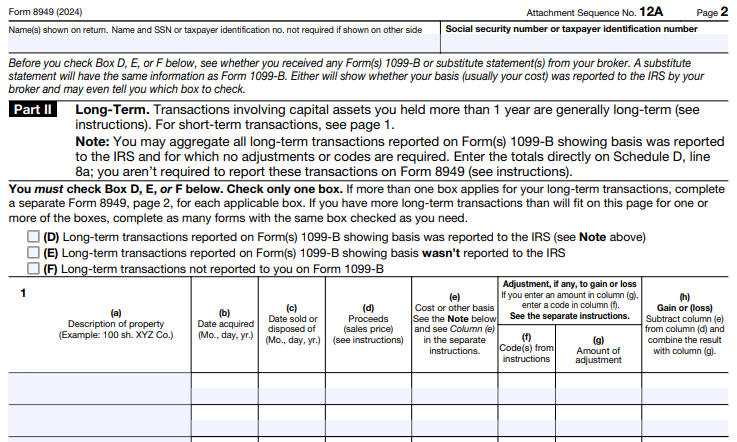Margin trading allows crypto investors to amplify their exposure by borrowing funds to increase position size. This can magnify profits, but it also increases risks and creates specific tax obligations in the US.
This guide explains how crypto margin trading is taxed in the US with examples, reporting instructions, and links to official IRS rules. For a broader overview of crypto taxation, see our comprehensive US Crypto Tax Guide.
Key Takeaways about Crypto Margin Trading Taxes in the US
- Profits from margin trading are generally taxed as capital gains.
- Losses from margin trading may be deductible.
- Interest and fees paid on borrowed funds may be tax-deductible.
- Liquidations are considered taxable disposals.
- All margin trades must be reported to the IRS using the correct forms.
What is Crypto Margin Trading?
Crypto margin trading lets you borrow funds from an exchange or broker to trade with more than your own capital. This increases your buying or selling power, allowing you to open leveraged positions.
For example, with $1,000 of your own funds and 5x leverage, you can control a $5,000 position. If the trade goes in your favor, your profit is multiplied. If it goes against you, losses are also multiplied and you may face a margin call (forced liquidation by the exchange if your account balance falls below the maintenance margin).
Simple Example of Margin Trading
Explanation: The trader contributes $10,000 of their own capital and borrows $40,000 to open a $50,000 position. Closing at $55,000 creates a $5,000 gain before interest and fees.
How is crypto margin trading taxed in the US?
The IRS does not have margin-trading-specific rules for crypto, but existing principles for property and securities can be applied. This means margin trades can create capital gains or losses.
Taxation of Margin Profits
When you close a profitable margin trade, the profit is taxed as a capital gain:
- Short-term capital gains: If the position is held for one year or less, the profit is taxed at ordinary income tax rates (10%-37%).
- Long-term capital gains: If the position is held for more than one year, the profit qualifies for lower long-term rates (0%, 15%, or 20%).
For a broader overview and examples on short-term and long-term profits, see our guide on Crypto Earning Taxes in the US.
Taxation of Margin Losses
Losses from margin trading are generally treated as capital losses.
- Capital losses first offset capital gains of the same type.
- If total losses exceed gains, up to $3,000 of net capital losses can reduce ordinary income in a given year, with the remainder carried forward to future years.
Loan Repayments, Trades, and Liquidations
- Repaying a margin loan with crypto is treated as a disposal, which means any change in value since acquisition results in a capital gain or loss.
- Using borrowed assets for trades or conversions is considered a disposal and subject to capital gains tax.
- If your position is liquidated and collateral is sold, this also counts as a disposal subject to capital gains tax.
How Can I Calculate and Report my Margin Trading Gains or Losses?
Calculating gains and losses on margin trades follows the same rules as regular crypto trades. The difference lies in the use of borrowed funds and the possibility of liquidation. Each trade must be tracked with its acquisition cost (cost basis), disposal value, and resulting profit or loss according to the IRS requirements.
Example: Taxable Gains from Margin Trading
Explanation: The trader opens a position worth $50,000 using $10,000 of their own funds and $40,000 borrowed from the exchange. When the position is closed at $55,000, the trader makes a $5,000 profit. Since the trade was held for less than one year, this profit is classified as a short-term capital gain and taxed at the trader’s ordinary income bracket, which ranges from 10% to 37%.
Example: Deductible Losses from Margin Trading
Explanation: The trader opens a $15,000 position by combining $5,000 of their own funds with $10,000 borrowed from the exchange. When the position is liquidated at $10,000 a loss of $5,000 is realized, which can be used to offset gains.
Are Fees from Margin Trading Tax-Deductible?
Margin trading usually involves different types of costs, such as:
- Trading fees (charged when opening or closing a position).
- Network (gas) fees (paid to the blockchain network)
- Margin interest (charged on the borrowed funds).
Trading Fees
Trading fees are considered part of the cost basis or disposal proceeds of a trade. This means they reduce your capital gain or increase your capital loss. For example, if you earned $5,000 on a trade but paid $200 in fees, only $4,800 would be reported as your taxable gain.
Network (Gas) Fees
If you pay blockchain network fees (gas fees) as part of executing your margin trades, these also count as part of your cost basis or disposal proceeds. Like trading fees, they directly reduce your taxable gains or increase your reported losses.
Margin Interest
Margin interest is treated differently. The IRS classifies it as an investment interest expense. You may deduct investment interest expenses, but only up to the amount of your net investment income and it is not clear whether these rules can be applied to cryptocurrency transactions. Any excess that cannot be deducted in the current year may be carried forward to future tax years. This rule is explained in IRS Publication 550 – Investment Income and Expenses.
How to Report Margin Trading to the IRS?
Reporting crypto margin trading follows the same structure as reporting regular crypto trades, but with the added complexity of borrowed funds, fees, and possible liquidations. The IRS requires each taxable event to be included on the correct forms. Depending on the type of transaction, you will use:
- Form 1040: The main tax return where all totals are consolidated.
- Form 8949: Used to report crypto disposals.
- Schedule D: Summarizes total capital gains and losses.
- Schedule A: Used to report Investment Interest (if applicable)
Form 1040: Answering the IRS Crypto Question
On the front page of Form 1040, all taxpayers must answer the digital assets question. You must answer Yes if you disposed of or earned crypto during the year. Simply buying and holding or transferring between your own wallets does not require a “Yes.” For detailed instructions, see the official IRS Form 1040 Instructions.
After completing Form 8949 and Schedule D the totals are carried over to Form 1040, your main tax return form.

Your Crypto Portfolio Manager
Form 8949 + Schedule D: Reporting Crypto Disposals
Each margin trade, repayment using crypto, or liquidation counts as a disposal and must be reported on Form 8949. The form is divided into:
- Part I (Short-Term) – For crypto held 1 year or less before disposal.
- Part II (Long-Term) – For crypto held more than 1 year before disposal.
For detailed instructions, see the official IRS Form 8949 Instructions.


Totals from Form 8949 are carried over to Schedule D (Form 1040), which summarizes:
- Net short-term gains or losses (from Part I)
- Net long-term gains or losses (from Part II)
- Overall net capital gain or loss for the year
For detailed instructions, see the official IRS Schedule D Instructions.

Margin trading often creates many taxable transactions that are hard to track manually. CoinTracking automatically imports transaction data and generates IRS-ready reports, making it much easier to stay compliant.
The Best Crypto Tax Calculator!
Conclusion – Report Your Margin Trades Correctly and Avoid IRS Trouble
Crypto margin trading can be profitable, but it also adds complexity to your taxes. Profits are taxed as capital gains and losses may be deductible. Even repayments with crypto and liquidations are treated as taxable disposals. CoinTracking can simplify reporting by importing all your margin trades and automatically generating IRS-ready tax reports. For complex cases, CoinTracking Full-Service gives you access to crypto tax professionals who can ensure everything is reported correctly.
Disclaimer
The information provided in this article is for educational and informational purposes only. It is not intended as financial, investment, tax, or legal advice. Cryptocurrency investments are highly volatile and carry significant risks. Before investing in cryptocurrencies, conduct thorough research, consult with a financial advisor, and ensure you understand the risks involved. The author and publisher are not responsible for any financial losses or damages that may occur from following the information presented in this article. Always use caution and make informed decisions when dealing with cryptocurrencies.




